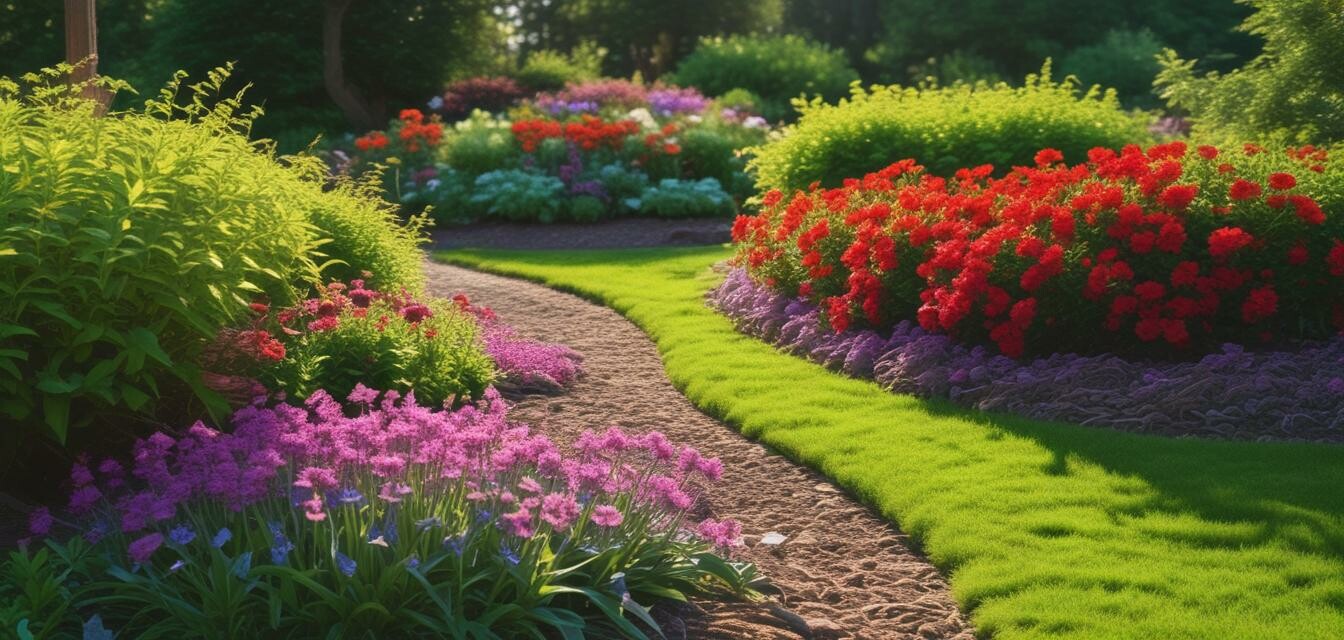
How to select the best mulch for your garden
Key takeaways
- Understand the different types of mulch available.
- Consider your garden’s specific needs, including plant types and local climate.
- Explore organic vs. inorganic mulch options.
- Evaluate mulch color and texture for aesthetic appeal.
- Think about the maintenance requirements of different mulch types.
Choosing the right mulch for your garden can enhance its beauty while providing essential benefits to your plants. Mulch not only helps with soil moisture retention but also suppresses weeds and regulates soil temperature. With various options available, understanding how to select the best mulch for your specific needs can greatly improve your gardening experience.
Types of mulch
There are two main categories of mulch: organic and inorganic. Here’s an overview of each type:
| Type | Description | Benefits |
|---|---|---|
| Organic Mulch | Natural materials that decompose over time, including wood chips, bark, straw, and leaves. | Enhances soil structure, provides nutrients, encourages beneficial organisms, and improves moisture retention. |
| Inorganic Mulch | Materials that do not decompose, such as stones, gravel, and rubber. | Long-lasting, effective at weed control, and requires less frequent replacement. |
Factors to consider when selecting mulch
When making your decision, there are several factors that can help guide you:
- Plant Types: Different plants may have varying requirements for moisture retention and temperature regulation.
- Local Climate: Consider how hot, cold, wet, or dry your environment is when choosing mulch.
- Color and Texture: Select a mulch that complements your garden’s design and enhances its visual appeal.
- Maintenance: Determine how much effort you want to invest in replacing or maintaining your mulch.
Organic mulch options
Organic mulches can be a great addition to your garden. Here are some common choices:
- Wood Chips: Excellent for moisture retention and slow to decompose.
- Bark Mulch: Provides a natural look and is great for landscaping.
- Straw: Best for vegetable gardens and is lightweight.
- Leaf Mold: A beneficial product made from decomposed leaves, rich in nutrients.
Inorganic mulch options
Inorganic mulches may require less upkeep. Consider these options:
- Gravel: Durable, good for paths and rock gardens.
- Landscape Fabric: Often used under other mulch types, it prevents weed growth.
- Rubber Mulch: Long-lasting and non-toxic but can be expensive.
Applying mulch
Once you’ve selected your mulch, applying it correctly is equally important. Here’s how:
- Prepare the area by removing any weeds or grass.
- If applicable, lay down landscape fabric to suppress weeds.
- Spread the mulch evenly to a depth of 2-4 inches, ensuring not to pile it against plant stems.
- Water the area lightly to help the mulch settle.
Maintaining mulch
Regular maintenance is vital for effective mulch usage:
- Monitor for weed growth and remove as necessary.
- Replenish organic mulch as it decomposes.
- Check the depth of the mulch periodically to ensure it remains effective.
Pros
- Improves soil health and moisture retention.
- Enhances the aesthetic appeal of gardens.
- Suppresses weeds effectively.
Cons
- Organic mulches require more frequent replacement.
- Inorganic mulches may not contribute to soil health.
- Cost can be a factor for larger garden areas.
Final thoughts
Choosing the right mulch can play a significant role in your garden’s health and beauty. By understanding the different types of mulch, considering your garden’s needs, and applying and maintaining it correctly, you can create an inviting outdoor space with thriving plants. For more insights into garden essentials, explore our buying guides for tools and materials that can support your gardening journey.